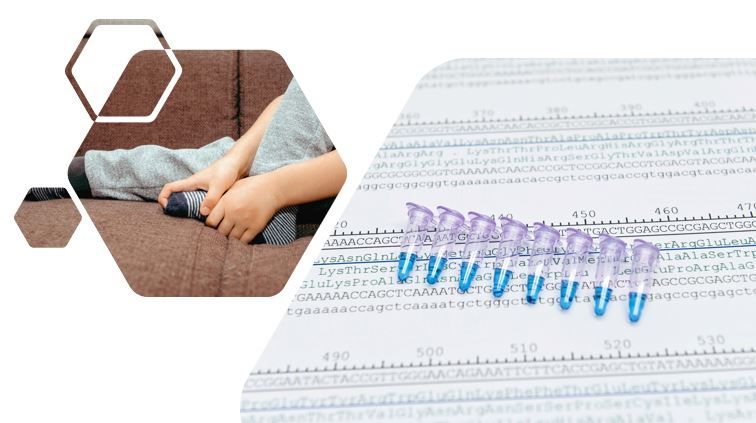Article
Genomic Risk Scores May Enhance JIA Diagnosis
Author(s):
In juvenile idiopathic arthritis, predictive genomic risk scores may enhance current diagnosis protocols, prioritizing higher-risk patients for follow-up and reducing treatment delays, according to a study published this month in Annals of Rheumatic Diseases.
(©Sebastian, AdobeStock.com), (©Hyungkeun, AdobeStock)

In juvenile idiopathic arthritis (JIA), predictive genomic risk scores (GRS) may enhance current diagnosis protocols, prioritizing higher-risk patients for follow-up and reducing treatment delays, according to a study published this month in the Annals of Rheumatic Diseases.
“There are no sensitive or specific tests available to assist clinicians in making the diagnosis of JIA,” wrote the authors, led by Michael Inouye, Ph.D., of the Baker IDI Heart and Diabetes Institute in Melbourne, Australia. “A diagnostic algorithm based on a JIA-GRS may provide a more timely, accessible and reliable means of assessing children with musculoskeletal symptoms who may be JIA cases, thus enabling appropriate triage and referral, facilitating early access to appropriate care, and reducing the pain, complications of the disease and poor long-term health outcomes, due to delayed diagnosis and treatment.”
The accurate and timely diagnosis of JIA is an unmet clinical need. Delays in the diagnosis and treatment of JIA result in an increased the risk of prolonged and uncontrolled disease. Primary care physicians and pediatricians have limited experience in JIA diagnosis, which is dependent on clinical presentations that can vary between patients. The International League of Associations of Rheumatology classification system recognizes seven subtypes of JIA based on features such as the number of joints affected and age of onset.A combination of history; examination; blood tests such as inflammatory markers; rheumatoid factor; HLA-B27; or medical imaging, such as X-ray, ultrasound or MRI, are currently used to diagnose JIA.
Juvenile arthritis has been shown to be heritable and to have a genetic architecture similar to other autoimmune diseases. Genomic risk scores are quantitative measurements of the likelihood that an individual has, or will have, a particular disease. However, the construction of genomic risk scores to aid in the diagnosis of JIA has not been assessed.
In this study, the researchers generated and tested genomic risk scores for JIA and its subtypes in three case/control cohorts (U.K., U.S.-based and Australia) with genome-wide single nucleotide polymorphism genotypes. The genomic risk scores were trained in the U.K. cohort (2,758 JIA; 5,187 controls) andtested in the Australian (558 JIA; 704 controls) and the U.S. (1,229 JIA; 5,512 controls) and cohorts.
Genomic machine learning yielded predictive genomic risk scores for JIA as a composite diagnosis (area under the receiver operating characteristic curve [AUC]=0.670 U.K., 0.671 Australia, 0.657 U.S.) as well as subtype-specific genomic risk scores. Enthesitis-related JIA, which may present with non-specific pains initially and is therefore more difficult to diagnose, had both the longest time-to-referral and the subtype genomic risk score with the strongest predictive capacity overall across data sets (AUC 0.72, 0.74, 0.77). Oligoarthritis JIA, the most common clinically reported subtype, had a genomic risk score that outperformed those for JIA overall (AUC 0.82, 0.84, 0.70).
“Given the cost effectiveness of a genotyping array and the time-invariant properties of germline DNA, these JIA-GRSs hold promise for rapid clinical translation as means of diagnosis and risk stratification,” the authors wrote. “At-risk children can be non-invasively stratified as high-risk much earlier in the diagnostic pathway, and children with low risk non-inflammatory disease can be appropriately triaged and managed earlier.”
_______________
REFERENCE
Rodrigo Cánovas, Joanna Cobb, Marta Brozynska, et al. “Genomic risk scores for juvenile idiopathic arthritis and its subtypes.”Annals of Rheumatic Diseases.September 4, 2020. DOI: 10.1136/annrheumdis-2020-217421




